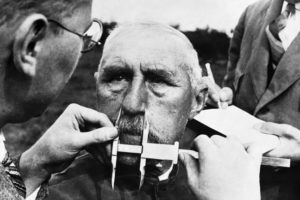Every year, a national campaign is introduced urging people to get the flu jab. Those thought to be particularly vulnerable, such as people with asthma, diabetes and other conditions are encouraged to get the vaccine in order to prevent them from getting the flu.
This year is no exception and a great many more people are lining up for the jab.
I was one of those people who despite feeling perfectly well and having no contact with anyone who looked or seemed unwell, opted for the vaccine to be on the safe side. This was in 2011.
Shortly afterwards, I ended up with the worst flu I have ever had, where I felt so unwell that even bending over to pick something up off the floor was a real strain.
I never made the same mistake again. I also saw friends and family succumb to a particularly nasty form of the virus once they were injected.
This made me curious – just how reliable is the vaccine and is it overhyped? Of course experts claim that the flu jab does not lead to the flu, nor any flu-like symptoms. They claim that it is not possible for it to do so.
However, from the research gathered so far, there are more questions than answers.
A report published in 2012 by the Centre for Infectious Disease Research and Policy (CIDRAP) at the University of Minnesota in the US, claimed that the idea that flu vaccines are effective is inaccurate and stands in the way of developing better treatments.
It also claimed the vaccine is “over-promoted” and that the flu shots given in the UK, are ineffective.
The most recent figures from the Health Protection Agency show that around 60 per cent of over-65s have had their flu shot this winter and 37.5 per cent of those with chronic illnesses did the same. Some 29.8 per cent of pregnant women have taken the flu jab along with 28.4 per cent of healthcare workers.
Each year, the vaccine is re-formulated on the basis of an educated guess by experts who attempt to match it with the strains of the rapidly mutating flu virus likely to be circulating that season.
Ineffective
A separate report published by an international group of experts known as the Cochrane Collaboration said that the vaccine has had little impact in years, especially during the winter of 2011-12, when the injection and the viruses were mismatched.
Tom Jefferson, an author of the Cochrane reviews, said: “We have conducted four reviews since the late 1990s. We calculated that you need to vaccinate between 33 and 99 people to prevent one case of flu, depending on the match between the vaccine and the circulating strains of the virus. I want people held accountable for wasting taxpayer’s money on these vaccines. The reviews have been available for years and nothing has been done.”
Overhyped
Professor Osterholm, is a public health adviser in the US who published a report called ‘The Compelling need for game changing influenza vaccines’.
He said: “Our report is very comprehensive. It took three years, we reviewed 12,000 peer reviewed papers and interviewed 88 experts from around the world. We took no money from the private sector or governments – we had no conflicts of interest.
“The most striking outcome is that we have over-stated the effectiveness of the influenza vaccine.”
Douglas Fleming, of the Royal College of General Practitioners’ Influenza Monitoring Unit in Birmingham, agreed and said that the vaccine had been overhyped.
Live experiments
In January 2013, Piers Morgan volunteered to be injected with the flu vaccine on live TV in order to prove the jab was safe.
He went on the Dr Oz show, in which Dr Oz stated emphatically that it is not possible to develop either flu or flu-like symptoms from the jab.
However, unfortunately, Piers Morgan then later admitted to getting flu-like symptoms just days afterwards. The illnesses inhibited his ability to speak properly. His symptoms quickly worsened, prompting him to publish a “tweet” on January 23, just 11 days after getting his flu shot, explaining that his voice had “plunged to [a] ludicrous level, fading in and out.”
Later in an interview with Yoakam, he said: “We’re both doing the math, aren’t we? We both saw him put that thing in my arm, and within 10 days I’ve been struck down.”
At the time, the media was awash with stories of GlaxoSmithKline’s Pandemrix H1N1 vaccine causing roughly 800 cases of narcolepsy, as well as nearly 50,000 cases of paralysis caused by Bill Gates’ polio vaccine in India.
Can Vitamin D help prevent flu?
In 2006, a study published in the journal Epidemiology and Infection published findings by Dr. John Cannell, who unveiled his study ‘Epidemic Influenza and Vitamin D’.
He claimed that the flu is a symptom of Vitamin D deficiency. Vitamin D is an important player in overall healthy immune function, but it’s also an effective antimicrobial agent in its own right, producing 200 to 300 different antimicrobial peptides in your body that kill bacteria, viruses and fungi.
A separate study published in PubMed in 2010, showed that vitamin D(3) supplementation during the winter may reduce influenza levels, particularly among children.
Dr. Cannell also published another study, in the Virology Journal, which found that almost two-thirds of the children who died from H1N1 swine flu complications had underlying health problems such as epilepsy, cerebral palsy, or other neurodevelopmental conditions. Neurological and immune disorders have been associated with childhood vitamin D deficiency, which could also have made the children more susceptible to the flu.
Akashic Times is the UK’s only online, fully independent not-for-profit newspaper that brings you real news from across the globe.
If you want to keep ahead of what is really going on in the world, subscribe to our newspaper via the subscribe button and join our Facebook & Twitter pages. Subscription is completely free ofcourse















Follow Us!